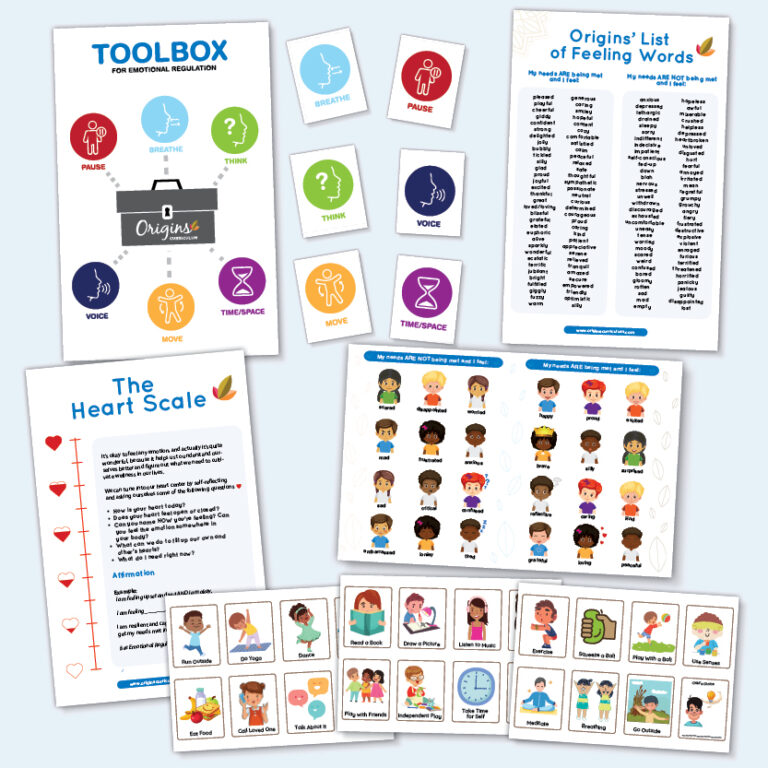Emotional Regulation Curriculum
Emotional Regulation Curriculum: Empowering Students to Thrive
Emotional regulation is a vital skill that empowers individuals to navigate their emotions effectively. As educators, it is crucial to equip our students with the tools they need to understand and regulate their own emotions. The Emotional Regulation Curriculum provides a comprehensive approach to fostering emotional intelligence in the classroom, helping students develop self-awareness, self-management, and positive relationships.
The Importance of Emotional Regulation in School

Emotional regulation is not only essential for personal well-being but also plays a significant role in academic success. When students are able to regulate their emotions, they can focus on their learning with greater clarity and concentration. Additionally, emotional regulation supports the development of crucial life skills such as problem-solving, decision-making, and effective communication.
Strategies for Teaching Emotional Regulation

Integrating emotional regulation activities into the classroom not only creates a positive learning environment but also helps students develop essential emotional intelligence skills. Here are some effective strategies that can be implemented:
1. Mindfulness and Breathing Exercises

Introduce students to mindfulness techniques that encourage them to focus on the present moment. Teach them breathing exercises as a way to calm themselves during times of stress or heightened emotions. Mindfulness and breathing exercises provide students with a valuable tool to reduce anxiety and enhance emotional well-being.
2. Emotional Vocabulary Building

Help students expand their emotional vocabulary by engaging them in activities that encourage the identification and expression of various emotions. Provide them with words to articulate their feelings accurately, empowering them to communicate their emotions effectively with their peers and adults.
3. Collaborative Problem-Solving

Encourage students to work together in groups to solve problems, fostering their interpersonal skills and emotional regulation simultaneously. Collaborative problem-solving teaches students to manage their emotions in a team setting, promoting empathy, active listening, and conflict resolution.
FAQs (Frequently Asked Questions)
Q: How does emotional regulation benefit students in the long run?
A: Developing emotional regulation skills at an early age sets a strong foundation for lifelong emotional well-being. Students who can regulate their emotions effectively are more equipped to handle stress, build positive relationships, and navigate challenges both inside and outside of the classroom.
Q: Can emotional regulation be taught to students at any age?
A: Yes, emotional regulation can and should be taught at any age. Implementing age-appropriate activities and strategies help students develop emotional intelligence skills that align with their cognitive and emotional development.
Q: How can parents support the emotional regulation curriculum at home?
A: Parents play a vital role in supporting the emotional regulation learning that takes place in the classroom. They can reinforce the concepts learned by encouraging open conversations about emotions, practicing mindfulness together as a family, and promoting a safe and non-judgmental environment for emotional expression.
Conclusion
The Emotional Regulation Curriculum is a powerful tool for empowering students to understand and manage their emotions effectively. By integrating strategies such as mindfulness exercises, emotional vocabulary building, and collaborative problem-solving, educators can create an environment that fosters emotional intelligence and supports students' overall well-being. By investing in emotional regulation education, we are equipping students with lifelong skills that will positively impact their personal and academic success.
Remember that emotional regulation is not solely limited to the classroom; it is a skill that students can carry with them throughout their lives. By prioritizing emotional education, we are setting the stage for a future generation that is empathetic, resilient, and equipped to thrive in a complex world.
Self Regulation Curriculum: Self Regulation Activities For School
 Image Source : www.pinterest.com.au
Image Source : www.pinterest.com.au Pin On ECD Child Development-theory
 Image Source : www.pinterest.com
Image Source : www.pinterest.com regulation zones curriculum emotional self book social thinking resources basket control designed foster amazon books back odin prize health socialthinking
Zones Of Regulation | Hawthornden Primary School
 Image Source : hawthornden.mgfl.net
Image Source : hawthornden.mgfl.net zones emotional hawthornden zoned mindful minions breathing upic mgfl classes
Emotional Regulation (ER) - Autism In Mind
 Image Source : autisminmind.org
Image Source : autisminmind.org emotional
Emotional Regulation Bundle - Origins Curriculum
 Image Source : consciouscurriculum.earth
Image Source : consciouscurriculum.earth Self Regulation Curriculum: Self Regulation Activities For School
 Image Source : www.pinterest.com.au
Image Source : www.pinterest.com.au Socialthinking - The Zones Of Regulation Free Stuff In 2021 | Social
 Image Source : www.pinterest.com
Image Source : www.pinterest.com Emotional Regulation Curriculum - Incredible YearsIncredible Years
 Image Source : incredibleyears.com
Image Source : incredibleyears.com Emotional regulation (er). Emotional regulation curriculum. Self regulation curriculum: self regulation activities for school. Emotional regulation bundle. Pin on ecd child development-theory